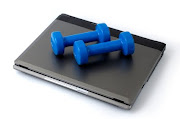
If you are like most people then you probably glance at the Nutrition Facts label on foods once in a while. Maybe you check for the number of calories or fat grams that an item contains, or maybe you are watching something specific - like your sodium intake. Whatever the case, it has been proven that those who pay attention to the Nutrition Facts label end up eating healthier.
The more familiar you are with the Nutritional Facts Label, the more likely you will be fit and healthy.
Each Nutritional Facts label has been designed to quickly and efficiently give you all of the important facts about a food item. You just need to know what you are looking for. Read on as we break down the Nutritional Facts label into 6 important facts.
Fact #1: Serving Size
This small detail skews the entire label if you don't read it closely. An item may seem like it is only one serving, but the Nutritional Facts label will consider it to be 2 or 3 servings. If the label says 100 calories, but there are actually 3 servings, then you are getting a total of 300 calories. Pay close attention to what makes a serving.
Fact #2: Calories
Most people don't have the time to count every calorie that they put in their mouth - this is understandable. However, you probably have a pretty good idea about the amount of food that you eat each day. When you approach a new item, read the calorie totals on the Nutritional Facts label, and factor the new calories into your daily intake. Steer clear of high calorie items - especially in the form of snack foods.
Fact #3: Fat
By now you have undoubtedly heard that all fats were not created equal. Here is a quick 1-2-3 breakdown.
1. Limit your intake of Saturated Fats - this deadly fat contributes to heart disease.
2. Avoid Trans Fats at all costs - not only does it contribute to heart disease, it also raises LDL cholesterol (the bad one).
3. Focus on eating monounsaturated and polyunsaturated fats - these don't raise LDL cholesterol and can even help lower blood cholesterol.
As you decide what food to include in your diet, keep your eye on the type and amount of fat included in each item. Remember, all fats were not created equal.
Fact #4: Carbohydrate
Though zero carb diets are losing their momentum, you may have been influenced by the idea that all carbohydrates will make you fat. That is simply not true. It is true, however that some carbohydrates are healthier than others. In fact, medical experts think that excess consumption of refined carbohydrates (such as soda pop, white rice, and white flour) are one of the reasons behind the rise of obesity we see today.
Choose fibrous, complex carbohydrates over sugary, simple carbohydrates.
Fact #5: Protein
The fact stands that most of us are getting plenty of protein in our diet. The problem arises when we examine the source of this protein. Meats and dairy products that are high full of fat may be filled with protein, but they aren't the healthiest form of protein. Choose protein from lean meats, dry beans, poultry, and low fat/fat free dairy products.
Fact #6: The Good Stuff
Directly beneath the protein count on the Nutritional Facts label you will see the percent daily value of Vitamin A, Vitamin C, Calcium and Iron that the food item contains. These numbers are easily overlooked, but hold great importance to your overall health. The more nutrient-rich food items provide you with the greatest benefit per calorie. Compare food brands and choose the most nutrient-rich option.
Are you struggling to reduce body fat? Click below to sign up for my FREE 7 Day Trial online fitness program to see how you can reach your goals .
Train Hard!
Adam Freeman
Master Personal Trainer
AdamFreemanPT@yahoo.com







1 comment:
I would also recommend reading the ingrediants. I was once told that if you can't pronounce what is in the ingredients then you should probably not be eating it. This is a good way too to find processed sugars and such that you may want to be paying attention to.
Post a Comment